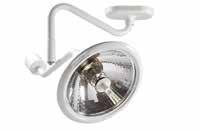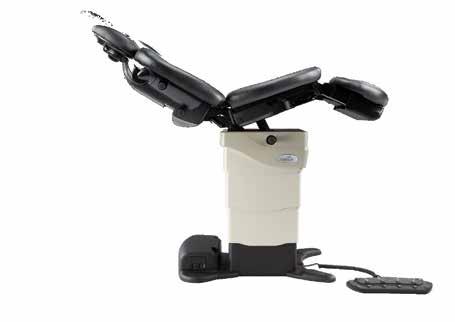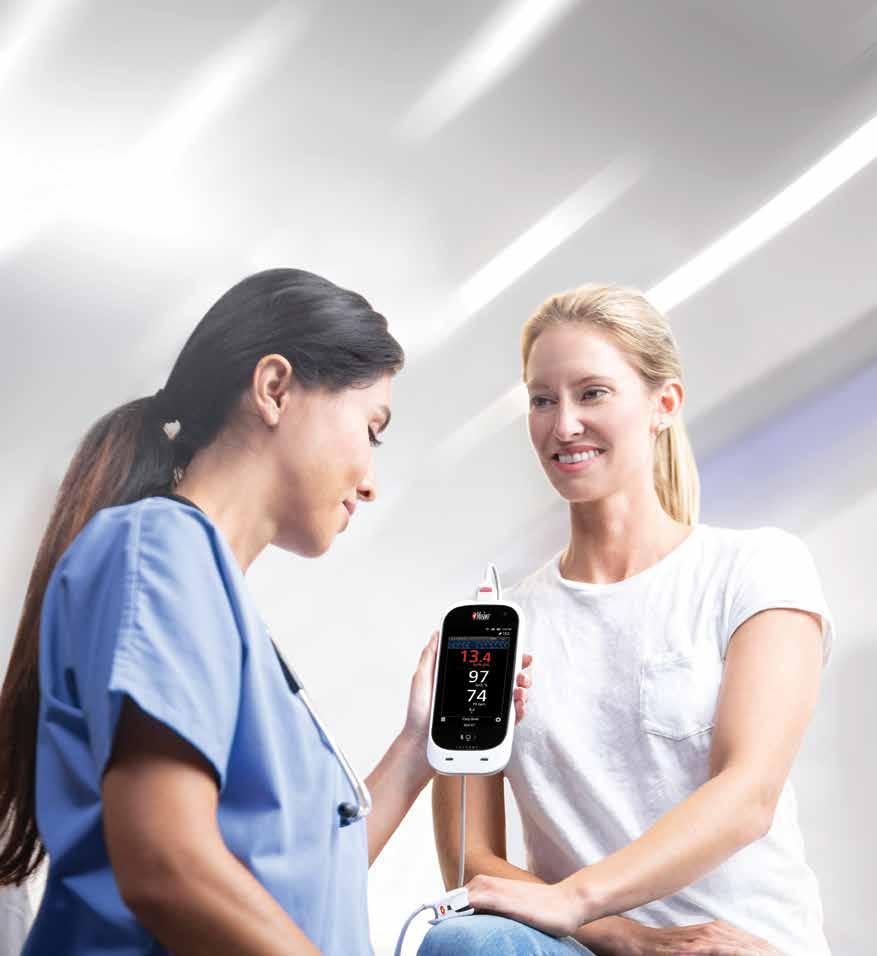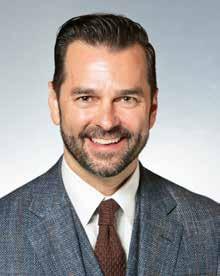
12 minute read
Unproductive strategies so common we think it’s normal
The 3 Biggest Sales Mistakes You Should Never Make Unproductive strategies so common we think it’s normal
By Sandler Training
Your strategies for interacting with prospects from the time you first meet them to the time you make a presentation can have a greater impact on your likelihood of closing a sale than the actual aspects of the product or service you have to offer. Following are three unproductive strategies that are so commonplace in the sales arena that they’ve become accepted as the norm.
No. 1: Failing to provide value During initial meetings with prospective clients, some salespeople, whether by design or lack of proper preparation, don’t communicate anything of real value. Sure, they talk about their company’s capabilities. They talk about their products and services ... and the associated features,
functions, benefits, and advantages. But they don’t convey any knowledge or insight about the prospects’ challenges or goals that the prospects didn’t already possess.
These salespeople are afraid that if they give away too much information, prospects will use it against them. They believe that prospects, armed with the knowledge,
will figure out ways to accomplish the outcomes they desire without the salesperson’s product or service.
What they fail to recognize is the difference between discussing concepts and revealing the specifics of implementing those concepts. It’s OK to discuss concepts. In fact, it’s desirable, especially if it helps prospects develop new perspectives on their challenges. After all, prospects must buy into the concept before they’ll buy the product or service to implement it.
If prospects don’t learn anything new by meeting with you, are you contributing any real value to the meeting? No. And, if you’re not contributing any real value to the meeting, will prospects have compelling reasons to do business with you? Again, the answer is “No.” No. 2: Focusing presentations on “what” rather than on “how” For some salespeople, the vagueness of their initial prospect meetings carries through to their eventual presentations. They fail to establish clear connecting links between the elements of their proposed offer and the specific aspects of the prospect’s requirements. Instead, their presentations focus too narrowly on their product or service, their company’s capabilities, and in some cases, on themselves. Much like the magician who waves a magic wand in the air and then, with a puff of smoke, produces a rabbit, the salesperson “waves” a rhetorical magic wand (a long list of features and advantages) and then, with some verbal smoke, produces a solution.
On the surface, those sorts of presentations are impressive. They typically include lengthy proposal documents which are often accompanied by a host of multimedia presentations filled not only with charts and graphs, but also illustrations and animations – all designed to support what is being presented. But on closer examination, they fall apart. Prospects want to know what you are going to do, but more importantly, they want to know how you are going to do it. You must be crystal clear about how you are going to accomplish the outcome the prospect desires. If you don’t establish a clear and unambiguous connection between the “what” and the “how” during your presentation, you’ll lose the opportunity to the salesperson who does. No. 3: Failing to present “elegant” solutions Some salespeople have a tendency to overcomplicate their offers. This occurs primarily for one of two reasons. Some salespeople believe that they must present complex solutions in order to establish intrinsic value. That is, they believe that the greater the number of elements to the offer, the greater will be its perceived effectiveness ... and the more readily it will be accepted by the prospect. Other salespeople overcomplicate their offers to establish financial value – to justify the attached “price tag.” They include a number of “value-added” elements which may be helpful, but are not essential to addressing the prospect’s needs. They are included for no other reason than to bolster the perceived value of the offer and thereby substantiate the required investment.
What these salespeople fail to recognize is that prospects actually appreciate “elegant” solutions. Elegant in that they are well-ordered, simple, and concise. Elegant solutions make it easy for prospects to connect your product or service to the outcomes they are after. The easier you make it for them to establish that connection, the more likely you are to make the sale.
If you find yourself engaging in one or more of these “commonplace” strategies, consider this: commonplace strategies are for commonplace salespeople who are satisfied with commonplace results. If your results have been all too commonplace, perhaps it’s time to change your strategies. Send your questions about improving Sales Development in your industry with a proven, systematic approach to selling to SalesTips@repertoiremag.com.
© 2020 Sandler Systems, Inc. All rights reserved. S Sandler Training (with design) and Sandler Selling System are registered service marks of Sandler Systems, Inc. Some salespeople believe that they must present complex solutions in order to establish intrinsic value. That is, they believe that the greater the number of elements to the offer, the greater will be its perceived effectiveness ... and the more readily it will be accepted by the prospect.

Coronavirus and the healthcare supply chain A snapshot of supply chain-related headlines of the global outbreak
Editor’s note: On Jan. 30, 2020, the International Health Regulations Emergency Committee of the World Health Organization declared the coronavirus outbreak a “public health emergency of international concern” (PHEIC). On Jan. 31, 2020, Health and Human Services Secretary Alex M. Azar II declared a public health emergency (PHE) for the United States to aid the nation’s healthcare community in responding to COVID-19.
The disease has since been confirmed in more than 100 countries, and as of press time, had infected almost 110,000, with more than 3,800 deaths.
The following stories from the dail-enews offer a snapshot into how the coronavirus impacted the healthcare supply chain through just one window of time (early March). For regular updates on the coronavirus, subscribe to the dail-enews, visit http://dn.mdsi.org/.
Trump administration says testing for virus would ramp up quickly as 600+ U.S. cases confirmed March 10: The Trump administration said that testing for the coronavirus would ramp up quickly in the coming weeks. “There will be more cases,” said Vice President Mike Pence. “But we simply ask for the American people to engage in common sense practices.” President Donald Trump appeared briefly at the start of the news conference to announce that the administration was considering a relief package for American workers harmed by the outbreak. More than 500 cases of coronavirus have been diagnosed in 35 states and the District of Columbia, not counting cases stemming from repatriation. But the number of cases could be much higher due to a lag in testing in the U.S.
U.S. healthcare conferences disrupted by coronavirus March 9: A growing number of conference organizers are cancelling, postponing or transitioning to virtual meetings as the coronavirus spreads across the globe and the U.S. This week’s HIMSS Conference (Orlando, FL) was canceled for the first time in its nearly 60-year history. President Donald Trump was scheduled to speak at the healthcare IT conference set for March 9-13. The famed tech, film and music SXSW Conference (Austin, TX), scheduled for March 13-22, was also canceled.
Hospitals keep close eye on supplies during coronavirus outbreak March 9: The coronavirus outbreak has hospitals keeping a close eye on their supplies. Washington state, for example, has seen the largest cluster of cases and has used a lot of protective equipment when treating patients with the virus. “I am concerned we will have some shortages of that,” said George Roberts, president of the National Association of County and City Health Officials, during a briefing at the National Press Club in Washington, D.C. “We certainly have our eyes on the supply chain,” Doug Allred, spokesperson for Cone Health (North Carolina), told Fierce Healthcare. “Certain supplies are on allocation from distributors, which means we cannot get amounts over and above our normal usage. So it is important that staff are aware of the situation.”
World Health Organization urges for 40% in increased production on protective gear March 4: The World Health Organization (WHO) urged manufacturers to urgently increase the production of personal protective equipment (PPE) worldwide. The scarcity of gloves, medical masks, respirators, goggles and face shields are leaving frontline clinicians poorly equipped to encounter COVID-19 patients. According to WHO, PPE supplies need to be increased by 40% worldwide. “Without secure supply chains, the risk to healthcare workers around the world is real,” said Dr. Tedros Adhanom Ghebreyesus, director of WHO. “Industry and governments must act quickly to boost supply, ease export restrictions and put measures in place to stop speculation and hoarding. We can’t stop COVID-19 without protecting health workers first.” WHO is working with governments, industry and the Pandemic Supply Chain Network to boost production and provide PPEs for critically affected and at-risk countries.
U.S. government promises to buy all leftover face masks to encourage production March 3: The U.S. government was promising to buy all the leftover face masks and respirators manufacturers had on hand once the coronavirus scare subsides and demand dries up. A pre-solicitation issued to suppliers by HHS last week laid out its intention to procure up to 500 million N95 respirators and face masks during the next 18 months for its Strategic National Stockpile. The masks will be used to protect healthcare workers and first responders from airborne pathogens. Companies, though, are already struggling to meet demand, which is outpacing supply. The Strategic National Stockpile is made up of vitally important pharmaceuticals, vaccines, antidotes and other emergency supplies in strategic locations across the country. Premier says 44% of N95 orders over past 45 days have yet to be fulfilled March 2: Premier Inc. (Charlotte, NC) said that 44% of its members’ N95 orders over the past 45 days had yet to be fulfilled. Company officials describe this as very abnormal. Under normal circumstances, they would expect nearly all of their usual orders to be fulfilled within one or two days. Soumi Saha, senior director of advocacy for Premier, told CNN that the manufacturers of medical devices like N95s aren’t necessarily reporting shortages to the FDA, but unlike drug manufacturers, they don’t have to by law The scarcity of gloves, medical masks, respirators, goggles and face shields are leaving frontline clinicians poorly equipped to encounter COVID-19 patients.
President Trump asks pharmaceutical companies to accelerate efforts on vaccine March 2: President Donald Trump has asked pharmaceutical companies to accelerate efforts to create a coronavirus vaccine. President Trump said pharmaceutical representatives were scheduled to visit the White House Monday and the meeting would now focus on coronavirus and vaccines. “We’re going to have another subject, vaccines, and how they’re doing,” said President Trump. “We’ve asked them to accelerate whatever they’re doing in terms of vaccines, absolutely.”
Industry News
New Road Warriors episode features Mike Racioppi In this NEW episode of Road Warriors, Repertoire Publisher Scott Adams interviews Mike Racioppi of Henry Schein. Mike gives some great insight into the current state of the industry, what he looks for when hiring leaders, and sage advice about how to achieve success. And to top it all off, Mike’s story about John Moran and Welch Allyn is one of the best we’ve had on the podcast yet. Visit www.repertoiremag.com/resources/podcasts.
Owens & Minor elects Gwendolyn Bingham to board of directors Owens & Minor, Inc. (Richmond, VA) has appointed Lieutenant General Gwendolyn Bingham to its board of directors, effective March 5, 2020. A retired 3-star US Army Lieutenant General, Lieutenant General Bingham served as Department of the Army Assistant Chief of Staff for Installation Management, where she provided policy, programs, and resourcing expertise for installation infrastructure and services for 156 Army installations worldwide.
Midmark announces retirement of chief administrative officer Sharyl Gardner
Midmark Corp., announced the retirement of Sharyl Gardner, chief administrative officer. Gardner plans to retire at the end of March after 13 years with Midmark. With more than three decades of managerial and leadership experience, Gardner started her career at Midmark in 2007 as vice president of human resources and was promoted to her current role as chief administrative officer in 2009. As part of her planned transition, Gardner most recently directed senior executive level succession planning and served on the Midmark digital ecosystem advisory council. As the liaison between executive management and shareholders at Midmark, she also led management’s role in board administration and recruitment, serving as the senior management represenSharyl Gardner
tative to the nominating and governance committee and compensation committees of the board as well as secretary to the board. During her career at Midmark, she also led many of the shared services functions including IT, corporate communications, human resources, customer care and guest services.
Masimo expands partnership with MS Westfalia GmbH Masimo (Irvine, CA) and MS Westfalia GmbH (Germany) announced that MSW will integrate additional Masimo measurement technologies into MSW’s plugand-play hybrid Jenny platform, to help clinicians assess brain function, oxygenation, ventilation, and resuscitation status. After launching the Jenny modular pointof-care monitoring device with integrated Masimo noninvasive, continuous rainbow SET measurements (including total hemoglobin, SpHb) and Masimo sidestream and mainstream NomoLine capnography, MSW plans to add Masimo Next Generation SedLine Brain Function Monitoring, O3 Regional Oximetry, and Oxygen Reserve Index (ORi) to Jenny. The company says this will make the platform more versatile and comprehensive and suitable for use in a variety of care areas, including the ICU and the OR, as well as in EMS and military settings.
Urgent care industry grows to more than 9,000 centers nationwide According to the annual Benchmarking Report from the Urgent Care Association (UCA), the total number of urgent care centers in the U.S. reached 9,616 as of November 2019, representing growth of 9.6% from the prior year. The report also indicates that almost 97% of urgent care patient encounters lasted one hour or less.
Additional findings of the report include: ʯ 98% of all respondents indicate that they have at least one monitor in place to oversee antibiotic prescribing ʯ 30% of respondents who are not currently offering telemedicine services intend to do so within six to twelve months

SAVE NOW!



Your customers can SAVE HUNDREDS on Midmark ® Procedure Chairs, Ritter ® LED Lighting and Mobile Treatment Cabinets! Don’t miss out on this opportunity—be sure to tell your 2020 PROCEDURE ROOM PROMOTION 2020 PROCEDURE ROOM PROMOTION SAVE NOW!
customers about these deals. Your customers can SAVE HUNDREDS on Midmark ® Procedure
Download the promo details and a patient positioning infographic you can share with your customers at: midmark.com/savenowREPapr Chairs, Ritter ® LED Lighting and Mobile Treatment Cabinets! Don’t miss out on this opportunity—be sure to tell your customers about these deals.
Download the promo details and a patient positioning
infographic you can share with your customers at: midmark.com/savenowREPapr
Noninvasive Hemoglobin in as Few as 30 Seconds

Get SpHb ® results in the palm of your hand with Rad-67 ™
masimo.com/rad-67




